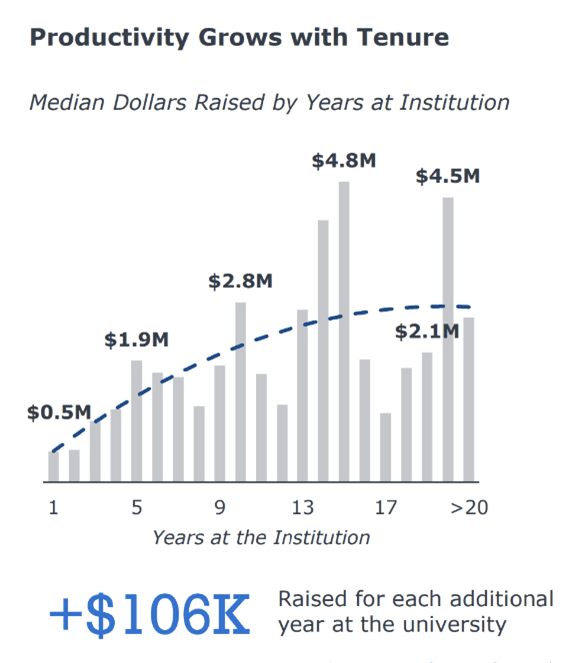3 ways advancement teams can achieve more with less
February 9, 2024
Many advancement professionals are all too familiar with this scene: you propose a new plan or innovation to leadership, and the conversation ends with “we don’t have money for that.” The almost inevitable guidance is to better utilize your existing resources.
Though frustrating, that conversation can create opportunities to increase your ROI without spending more. I’ve noticed that advancement teams often have the foundational elements required to achieve their goals; the challenging task is balancing strategy and spend.
Here are three steps you can take to maximize your advancement resources and achieve more with less.
Conduct a Cost-Benefit Analysis
The first step to maximizing your advancement resources is to conduct a thorough cost-benefit analysis. Advancement shops can see hundreds of invoices per year, and it’s easy to duplicate efforts when not closely tracking activities. To understand the full scope of your costs, you should review line items and vendor relationships side by side.
When it comes to vendors, assess their compatibility with your team’s needs. Try using these discussion questions in your next vendor meeting:
- Are there any aspects of our relationship that we’re under-utilizing? How can we make the most of our investment by using every resource available?
- Are there any overlapping procedures between our teams? How can we optimize this?
- Do your practices align with our institutional goals? How can we pivot to better serve the school’s needs?
Tip: Explore per-piece savings tiers with mail/print vendors
You can likely reduce costs with higher counts of mailings as economies of scale work in your favor. Choose the next highest one (with slightly more savings) that still limits sending to those who have already shown they respond to mail.
Consider reducing the amount you invest in under-performing channels. For example, you might optimize your phone program by calling only historically phone-loyal donors, and focus your direct mail efforts using data.
Finally, consider redirecting unfilled FTE lines, which will save on candidate search, hiring, onboarding, benefits, and turnover costs, offsetting higher salary expectations for competitive new hires. The most successful advancement offices use these savings to invest in support services.
Grow Revenue with Micro Campaigns
After right-sizing expenditures, your team needs to boost revenue. Micro campaigns are ideal because they allow you to experiment with new fundraising campaigns at a low cost. Connect with these new donors through digital campaigns, which will help you quantify wins and meet younger graduates where they are.
Consider micro campaigns for non-traditional areas like:
- student clubs
- former students of a retiring beloved professor
- student life areas such as intramurals
- favorite recreational areas of campus
Once you’ve gathered donors from these campaigns, personalize your follow-up. Try sending quick notes to first-time donors, which costs little-to-nothing and reinforces a meaningful donor experience. A prompt thank you note can help to build a stronger relationship, as it demonstrates that your school is invested in maintaining a connection with its donors.
Maintain Your Most Valuable Resource
 Turnover is costly and disruptive, so retaining employees is one of the best ways to protect your productivity over time. EAB research shows that the employees with longer tenure are typically more productive, with each year of service returning an average of $106K in dollars raised.
Turnover is costly and disruptive, so retaining employees is one of the best ways to protect your productivity over time. EAB research shows that the employees with longer tenure are typically more productive, with each year of service returning an average of $106K in dollars raised.
But amid the “Great Resignation,” many colleges have found retention to be challenging, especially among advancement talent. There are many reasons for staffing shortages, including lagging compensation packages in higher ed, a strong employee preference for remote work, and a shrinking population of working-age people. Compounding the issue is the increased stress that resignations and vacancies place on the rest of your team.
EMPLOYEE RECRUITMENT AND RETENTION RESOURCE CENTER
EAB research shows that equitable compensation and a flexible, supportive environment are foundational to employees, no matter which department they work in. Beyond that, creating an environment where everyone is celebrated for their success—not just top performers—can be extremely meaningful.
WHY ADVANCEMENT EMPLOYEES LEAVE (AND HOW LEADERS CAN FIX IT)
When to Ask for More
Sometimes, the desired result of the new investment you’re asking for is already possible with the tools you have. Embrace continuous creativity to find new ways to utilize your resources. After carefully evaluating the current state of your finances and resources, and proving that you’ve exhausted all available options, you can then begin to make the case for new investments to leadership.
More Blogs

Why you can’t afford to cut back on annual giving

8 key trends shaping advancement in 2025
